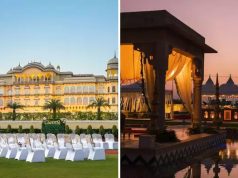India is surrounded by a large number of breathtaking and beautiful hill stations spread across the country. Hill stations gained popularity in the early 1800s and the term was invented during the British Raj. Let us tell you, the British rulers had built these hilly places at a height to escape the heat of India. These hill stations are also known as Summer Orients. During that time the British rulers and their families used to visit hilly places to enjoy the flora and fauna. Let us tell you the reasons for making these hill stations in this article, as well as tell about the hill stations which were built during the British era.
Why were hill stations built by the British?

When the British came to India, there were no recreational places for them. Then, they figured out how to spend their holidays in the plains, and they started cutting the hill and making paths. Guesthouses were also built in those places. Hill stations like Darjeeling, Kellingpong, Mount Abu, Guwahati, Cherrapunji come in this list. Where tea could be cultivated, tea gardens were started, a new business was set up by inculcating the habit of tea to Indians. This is how hill stations were built here. Let us now tell you about those hill stations .
Shimla – Shimla

Shimla, also known as the “Queen of Hills” , used to be the summer capital during the British Raj. The Viceroy’s House here presents a fine example of architecture with gray sandstone and pale blue colored limestone. The palace is adorned with stained glass windows, brick ceilings and carved objects. Other historical buildings are Mall Road, State Library, Ellersley, Gorton Palace, Church and Temple, which make this hill station even more beautiful.
(Photo Credits: pexels.com)
Mussoorie and Landour

Mussoorie and Landour, known as the Twin Cities, are famous for their rustic charm. There are many prominent structures and houses built in European style, which further enhance the beauty of these hill stations. The Christ Church in Mussoorie is a fine example of Gothic architecture with its pointed arches, ribbed vaults, stained glass windows, built in 1836. Another heritage site here is the George Everest House which is situated on a rock. This place offers a glimpse of the serene Mussoorie Valley. Built by Sir George Everest in 1832, this house has only one wall and roof. Another major attraction of Mussoorie is the Mall Road here.
Dehradun – Dehradun

Dehradun Hill Station is a beautiful city nestled amidst the Himalayan mountain ranges. Here is the famous hexagonal clock tower dedicated to the brave freedom fighters who lost their lives during independence, the foundation of which was laid by Sarojini Naidu and inaugurated by Lal Bahadur Shastri. Another architectural attraction is the Forest Research Institute, built in 1878 in a classic blend of Greco-Roman styles and the Colonial style of architecture. Paltan Bazaar and Dehradun’s Connaught Place also offer glimpses of splendid colonial-era homes and shops.
Nainital – Nainital

Nainital, popular for European boarding schools, also used to be the summer capital during the British rule. Nainital has colonial structures such as the Raj Bhavan or the Governor’s House, which are designed as a copy of Buckingham Palace in the Victorian Gothic style. Built in the Neo-Gothic style of architecture, St. John’s Wilderness Church is one of the oldest churches in Nainital. The Balrampur House, decorated with wooden floors and vintage furniture, is now used as a hotel and resort. Other colonial-era structures are the Methodist Church, Chevron Fairhavens, St. Joseph’s College, the Writers’ Bungalow, and Gurney House.
Ooty

Ooty is a hill station in the state of Tamil Nadu that serves as the summer capital for the Madras Presidency. There are also many heritage structures built during the British Raj. St. Stephen’s Church is the oldest church in the Nilgiris district which is built in the Gothic style. The Fern Hill Palace, set amidst lush green landscapes of 50 acres, used to be the summer residence of the Maharaja of Mysore. It houses the Adams Statue, the Stonehouse, the Lawrence School, the Lawley Institute, the Breaux School, the Assembly Room and the Eucalyptus Library, all of which are of Italian Gothic style.
Be it summer or winter, these hill stations of British era now give rest to the people. People get peace by sitting here. Even though the British rulers made them on their own terms, but now they leave no stone unturned in giving comfort to the people. Maybe we can say thank you to them for this!
If you want to promote your Tour offer/package on our website, then please share your information, I will add on website OnlineTourGuide.in.








